How I made trouble for myself, again
(October 2013)
If you find yourself chatting to Master Mark about his modelling you will soon discover that a part of the process he really enjoys is the planning of his projects. You may find yourself looking into a box of Mach 2 parts and wondering how anything good can come from it, but Mark has a plan. This mis-shapen piece of plastic can be replaced by a resin piece imported from a special manufacturer in Outer Mongolia, other parts can be sourced from the spares box and the decals can be replaced by a special set he picked up on our bus trip three years ago. Every problem has been resolved conceptually well in advance and everything has been arranged so that the modelling process itself is the performance of a set of well defined and planned processes. What a wonderful world it would be if everyone thought and acted like this.
If one was to open up Master Mark’s cranium and peer inside one would no doubt find all the neurons carefully arranged in orderly patterns, a marvel of order and precision. If, on the other head, you were to look inside my head you would find no such order and perfection. All is chaos and confusion. I think of myself as one of those modellers who opens the box and starts gluing parts together with scant attention to the instructions until something goes wrong. No planning required here.
That, at least, was how I thought of myself until recently. I woke one morning with the urge to make a model of a DC-8, one of the most elegant of airliners. Fortunately I have collected a few Minicraft DC-8 kits over the years and read up on all the variants with their different wing and fuselage sizes and engines. However, this thought led to a process in which I find myself working on a set of Boeing airliners.
Also, over the years, I’ve collected after-market engine sets that will allow me to make many of the DC-8 versions and they have gone into a box with many other conversion sets for airliners. As I started shuffling through the box there was a plastic bag with two large plastic tubes that kept getting in the way. What was it? Peering at the label on the bag I found it was the fuselage extensions to convert a Minicraft Boing 777-200 into a -300. I pushed it to one side to find another, slightly smaller, conversion kit. What was it? Conversion parts to turn a Revell Boeing 767-300 into a -400 and, after I pushed that to one side, a smaller set that would convert a Minicraft 757-200 into a -300. (I have a vague memory of buying the 767-300 conversion set because I had to find it on ebay, but I’m not sure how the other sets came to be in my box.) Only after they were out of the way could I get to the DC-8 engines. How annoying, I thought, to have all those lovely DC-8 engines covered up by these conversion sets. I only thought momentarily about dropping them in the bin, but the only serious solution to the problem was to actually use them to make models.
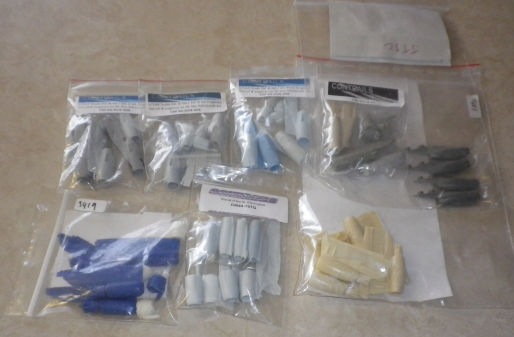
Boeing engine sets
You may recall that I made the complete set of Boeing 737s, from -100 to -900, a few years ago. That was quite an exercise with collecting all the kits and parts needed, finding out the lengths, wingspans and engines for each version and finding decal sets from some of the less common versions. Now I had to do it all again, and that meant PLANNING!
The first part of the planning process is strategy. In a burst of logic that now escapes me I decided to make the 767s first, then the 777s, then the new 787, and then to work my way back through the numbers to the 757 and 747s to the 727, 717, 720, 707 and beyond. Next comes tactics which requires a lot of reconnaissance, also known as research. (But nothing too detailed, I don’t mind doing research in depth but I prefer people to pay me for it.)
The two most useful sources of research are Wikipedia, which has as much detail as I need about size, engines and other details, and Airliners.com which is a wonderful source of photographs of just about any airliner you can imagine. Using the photo index you can find photos of most airliners sorted by sub-variant and operator. I don’t know that I wrote the result of all this planning on a piece of paper but working it all out did occupy a lot of my time.
Armed with this research I then began trawling model retail interweb sites such as Airliner Hobby Supplies looking for engine sets, wing-tip extensions and decals. There was also the matter of paint schemes to go with the decal sets and finding suitable paint. This is not as easy as making military models because the model paint manufacturers don’t pay much attention to airliners and very few airliners appeared in late-German camouflage schemes.
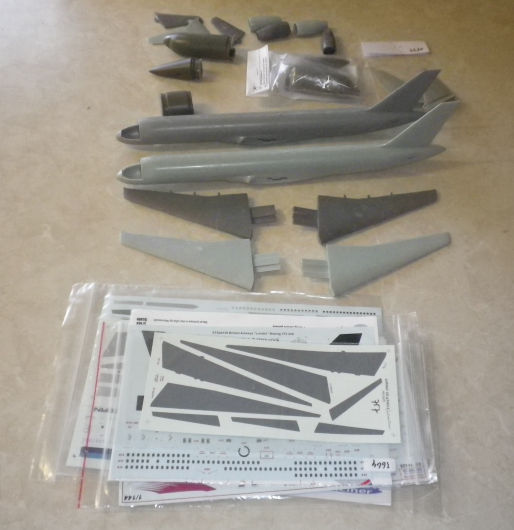
Parts for Boeing 757s
After a couple of months I was ready to start cutting plastic, literally. The first model onto the production line was an Ansett Australia 767-200, which is shorter that the -300 of the Revell kit. This is an interesting technical problem because sections have to be cut out of the fuselage in front of and behind of the wings. It is easy enough to find out how much shorter a -200 is than a -300 but not to find out how much comes out of either side of the wing. I don’t know how others do this but I do it by counting the number of windows, and working out how many less windows a -200 has than a -300, and then cutting them out, carefully.
Next came the 767-300 which is made more-or-less straight out of the box, but making sure that the engines were the ones used in the Qantas fleet because the 767-300s flown in Australian colours were taken out of the Qantas fleet. Finally came the 767-400 which would use up the fuselage extension parts I’d found in my box. Sadly, it turned out that the extension set was rather poor and too wide in diameter than the kit fuselage, so they ended up in the bin after all. Fortunately for me, it turned out that the fuselage sections cut out of the -300 to make the -200 were exactly the same length as the extensions needed for the -400, so in they went instead.
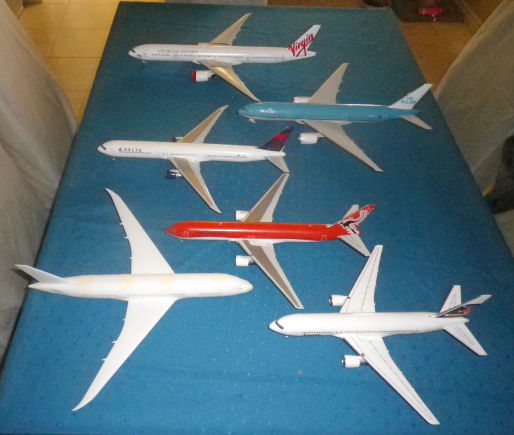
Some big Boeing airliners
Overall, the three 767s turned out fairly well, and the 777s were not too much of a problem. The 787 is being made straight out of the box with improved engines and aftermarket decals, but then I have to turn back to make the Minicraft 757s, which are a whole new world of hurt.
Let this be a lesson to you, boys and girls, planning can be bad for you.
Leigh Edmonds
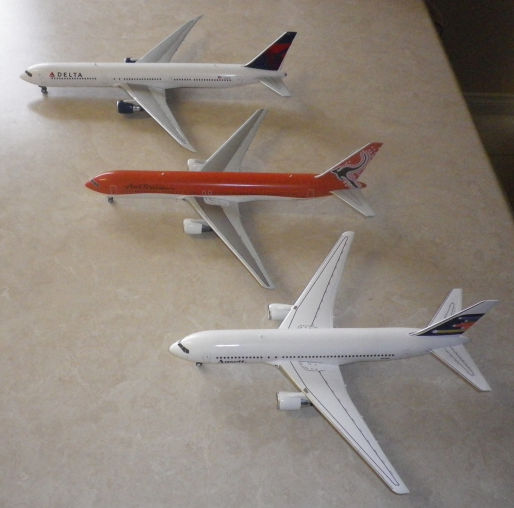
Boeing 767s
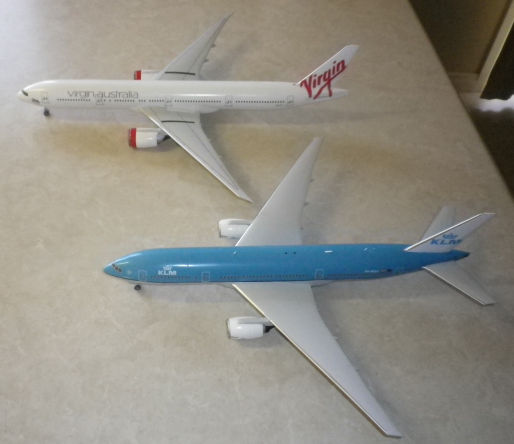
Boeing 777s